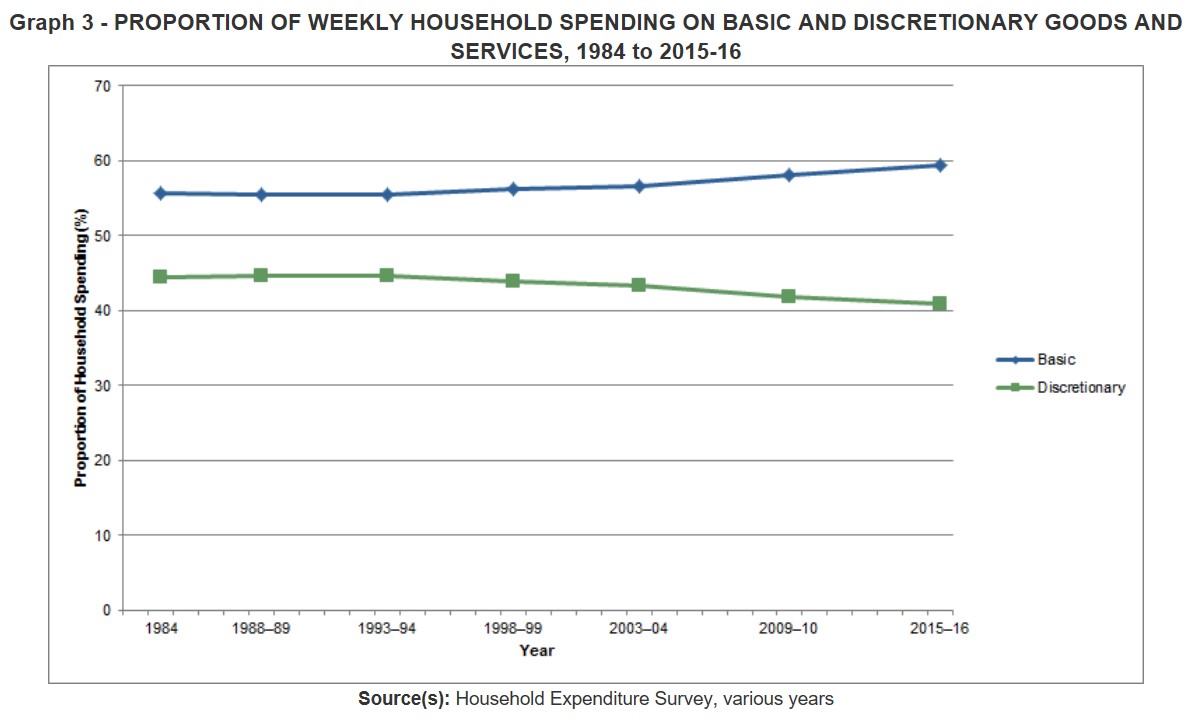Earlier this month, the ABS released its Household Expenditure Survey for 2015-16, which revealed that Australian households are spending more on basics:

Today, the ABS released further analysis of its Household Expenditure Survey and has revealed that spending on education, household services and childcare is taking-up more of household’s budgets:
“In the six years since the last survey, the biggest increases in spending on goods and services by households have been in education (up by 44 per cent), household services and operation, including child care services (up by 30 per cent), energy and health care (both up by 26 per cent),” ABS Chief Economist, Bruce Hockman said.
“We’re seeing increased spending for families with children in many areas. The hike in education spending mainly came from spending on school fees, which rose by almost half from 2009-10 to 2015-16. Child care spending also rose considerably, almost doubling over that six year period.”
In 2015-16, child care spending was highest for couple families whose youngest child was under five years. These households spent an average of $114 per week on child care. Child care spending decreased to an average of $21 per week in households where the youngest child had reached school age (5-14 years), but average spending on school fees for these households was $152 per week.
Where you live makes a big difference to household spending. Sydney households reported the highest average spending on child care in 2015-16, at $30 per week, more than $12 higher than the national average.
When it comes to energy, households in some cities were spending a lot more in 2015-16 to keep the lights on than in 2009-10. Perth and Adelaide saw the largest percentage increases in average electricity spending, at 37 per cent and 30 per cent respectively. Hobart and Canberra were the only capital cities where spending on electricity remained stable over the six years.
Darwin households spent the most in dollar terms on electricity, averaging $47 per week in 2015-16, but Canberra spent the most on gas, at $21 per week on average.
Average weekly spending on health care has increased by 26 per cent, from $66 in 2009-10 to $82 in 2015-16.
Households where the reference person was aged 55-64 years were paying more for health care in 2015-16. Average weekly spending by these households was up by $24 over the six year period, from $78 in 2009-10 to $102 in 2015-16. Most of this increase was in health insurance payments, which rose on average from $35 to $51 per week over the same period.
While the above increases have been measured in nominal terms (rather than adjusted for inflation), it does highlight the growing cost of living for families with children.

